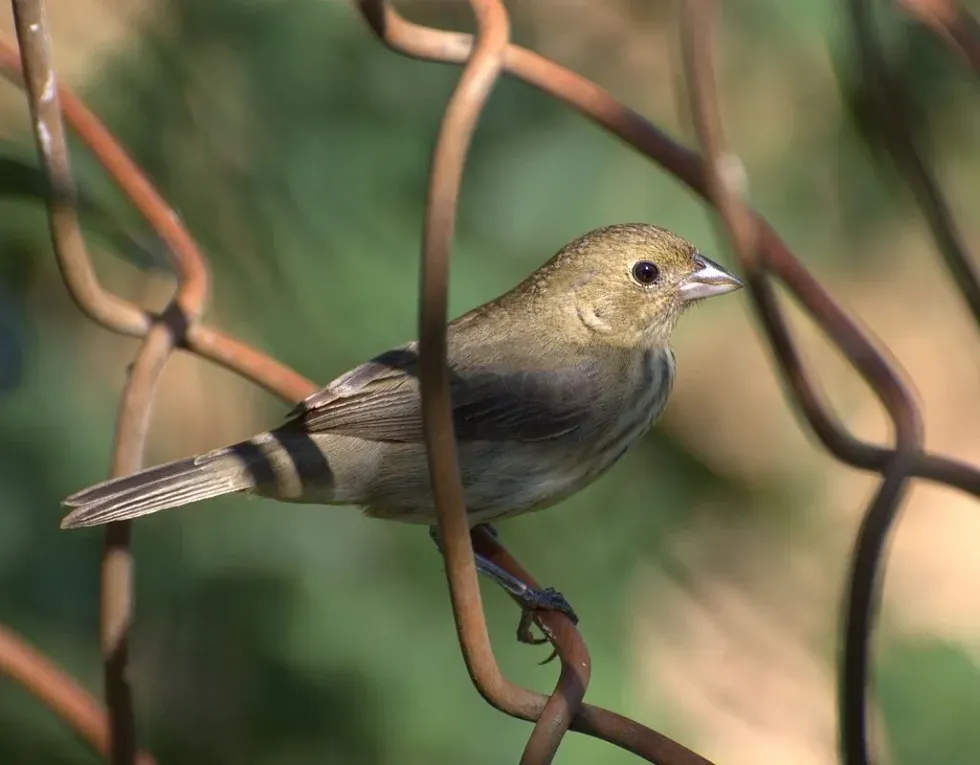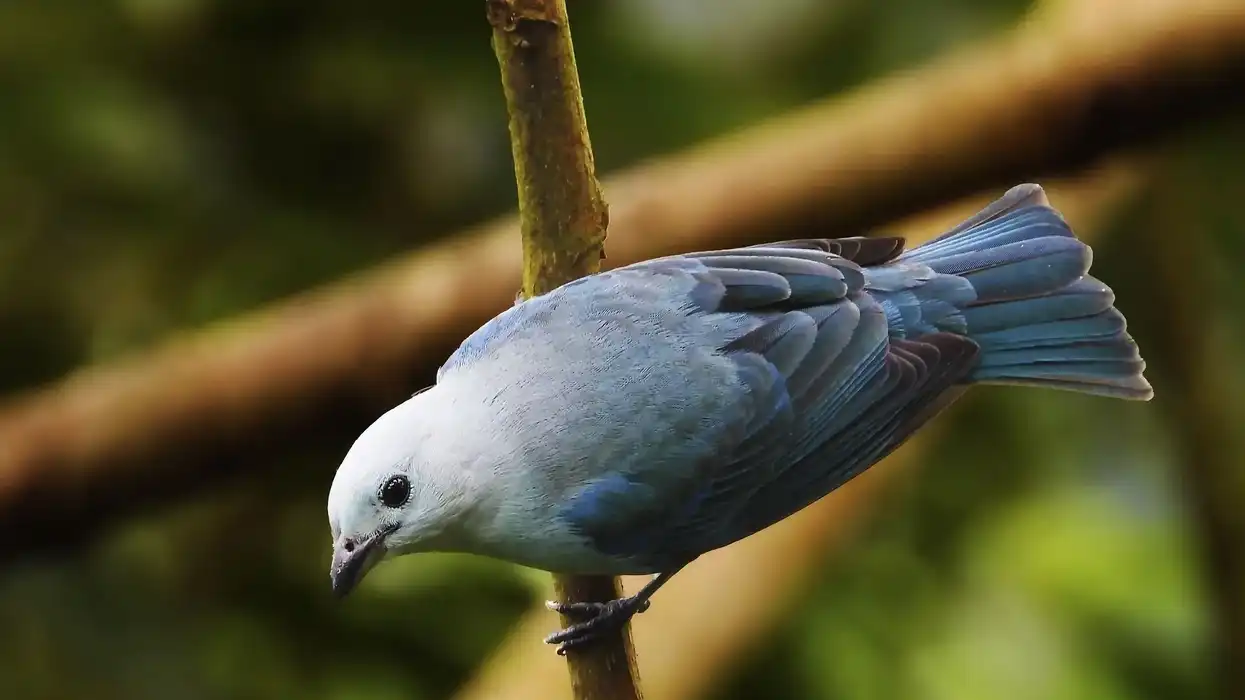The blue-black grassquit (Volatinia jacarina), or Jacarina finch as its scientific and native name suggests, is a small neotropical bird. Their populations are endemic to Central and South America.
These tiny birdies are often found in the grasslands, gardens, and open cultivated lands of Peru, Mexico, Trinidad and Tobago, Brazil, Argentina, Chile, and Paraguay.
The appearances of these birds are different based on their sexes, and one can assume that the name of their entire breed is based on the masculine appearance of a blue-black glossy body. These tropical birds feed on seeds, berries, and they might even indulge in eating small insects and worms at times.
They are social and yet focus on monogamous living. Males are known to carry out extended display rituals during the mating season. This is also referred to as a 'dance' they perform to attract their partner by showing off their flight skills and white spots under their wings.
Don't these details make these birds interesting to read already? Read on to know more amazing facts about this species of blue-black grassquits. For more relatable content, check out these European perch facts and Japanese grosbeak facts for kids.
Blue-Black Grassquit Interesting Facts
What type of animal is a blue-black grassquit?
The blue-black grassquit is a member of the genus Volatinia and belongs to the category of birds.
What class of animal does a blue-black grassquit belong to?
The blue-black grassquit (Volitinia jacarina) belongs to the Aves class of the tanager family Thraupidae of animals.
How many blue-black grassquits are there in the world?
Even though blue-black grassquits are not threatened in their endemic lands, their exact population is unknown to many researchers.
Where does a blue-black grassquit live?
These birds are not listed under the North American native birds. They are mainly found in parts of Central and South America. This small bird has its population distributed abundantly across southern Mexico, Peru, northern Chile, Argentina, and Brazil.
What is a blue-black grassquit's habitat?
V. jacarina is a small bird considered a neotropical or a tropical bird. They are usually seen flying around in the open range of grassy grounds or resident fields. Most of the time, these birds are observed taking carefree flights mainly in gardens, residential backyards, grasslands, cultivated lands, and weedy pastures.
Who do blue-black grassquits live with?
Even though this species is considered social in nature, they are usually seen alone or in their monogamous pairs. One can spot them in loose gatherings or small groups before the mating season and at feeding grounds all year round.
How long does a blue-black grassquit live?
Even though the blue-black grassquit (Volatinia jacarina) is known to have a good life, the exact lifespan of this species in the wild or captivity is unknown. However, other species in its family, like the saffron finch and the tanager birds, are known to live for more than 12 years.
How do they reproduce?
Adult blue-black grassquits have their breeding season between early May or June and late August. Adult males are seen performing their breeding season displays or dances, often performed for long periods.
These displays include the males taking flight and dropping themselves down from a perch height of 1.6-2.9 ft (50-90 cm). This allows them to showcase the white spots on their body. They add their short song-calls while trying to attract female partners.
They start to build their nests during July. These nests are small basket-like, and the females lay around two to three small eggs after the mating is done.
While the female incubates these eggs for a span of 10-12 days, the males continue with their display, often performed for long periods until the hatching takes place. After the eggs hatch, adult blue-black males stop with the displays and take care of the newborn birds' feeding needs for another 10 days.
What is their conservation status?
This species of blue-black grassquit (Volatinia jacarina) belongs to the Least Concern list of the International Union for Conservation of Nature (IUCN) Red List of birds that belong to Central and South America.
Blue-Black Grassquit Fun Facts
What does the blue-black grassquit look like?
Male and female Voltinia jacarina birds look different. The male has a dominant glossy blue-black body with a few white spots under its wings visible during their display flight.
On the other hand, the female has olive-brown upperparts and a lighter gray and beige chest and underparts. Both the male and female have beady dark-brown eyes with small cone-shaped bills and gray-colored feet.
Juveniles are similar to females but even paler in color. They, too, have light-brown upperparts and grayish-white underparts and molt twice a year, once during the winter and once before the breeding period.
How cute are they?
Males can be considered cute, especially when they display their dark plumage with shades of white on their body under the wings.
How do they communicate?
Like most other species belonging to the Aves class of animals, this species of Volatinia jacarina communicate with their visual and vocal skills. The male mainly speaks with the help of its song and flying display during the breeding period. They have a high-pitched sharp call of 'tsick', 'sip', and 'deuzz'.
How big is a blue-black grassquit?
The adult blue-black grassquit is a small bird and a member of the genus Volatinia with a size range of 3.9-4.3 in (10-11 cm). They are twice the size of bee hummingbirds and a little smaller than the common house finch.
How fast can a blue-black grassquit fly?
Even though the exact speed of the blue-black grassquit species is unknown, they are seen taking quick flights at a height of 1.6-2 ft (50-61 cm) whenever in the air.
How much does a blue-black grassquit weigh?
This species of grassquit is one of the smallest birds and has a weight range that might reach only as much as 0.3 oz (9 g) maximum.
What are the male and female names of the species?
The blue-black grassquit is a gender-neutral term and is used for both male and female birds. This species can be distinguished based on their physical descriptions.
What would you call a baby blue-black grassquit?
A baby blue-black grassquit is called a nestling.
What do they eat?
This family of birds is omnivores in nature. Their primary source of food consists of all kinds of seeds and berries. Their intake of seeds might vary based on the plant species that are available in their habitat. At times, they might also be seen feeding on small insects instead of plant seeds alone.
Are they dangerous?
No, blue-black grassquits are not considered as dangerous. Although, due to their nature as seed-eaters, they cause crop losses to farmers when flying and rummaging over cultivated land.
Would they make a good pet?
Even though they are not often seen indoors, these blue-black grassquits can be kept as pets. They are also known as Jacarina finch pets in many of their endemic regions.
Did you know...
The male Volatinia jacarina is known to defend its small territory during the breeding period. This is assumed to be one of the reasons why it continues its mating season display throughout the incubation period.
This species of Volatinia jacarina tops the list of birdwatchers with their dark body and subtle high-pitched songs. In the central parts of America and the regions of South America, the sightings of these small birds with their glossy dark plumage are pretty famous as it often happens.
Tourists in these regions love to take photos of these birds and observe their flights, especially the male flights during the mating season.
How many eggs do blue-black grassquits lay?
Females lay around two to three small bluish or greenish-white eggs with a few dark spots during the season. These eggs are laid and incubated in a basket-shaped, unruly nest that is made with some dry twigs and grass.









